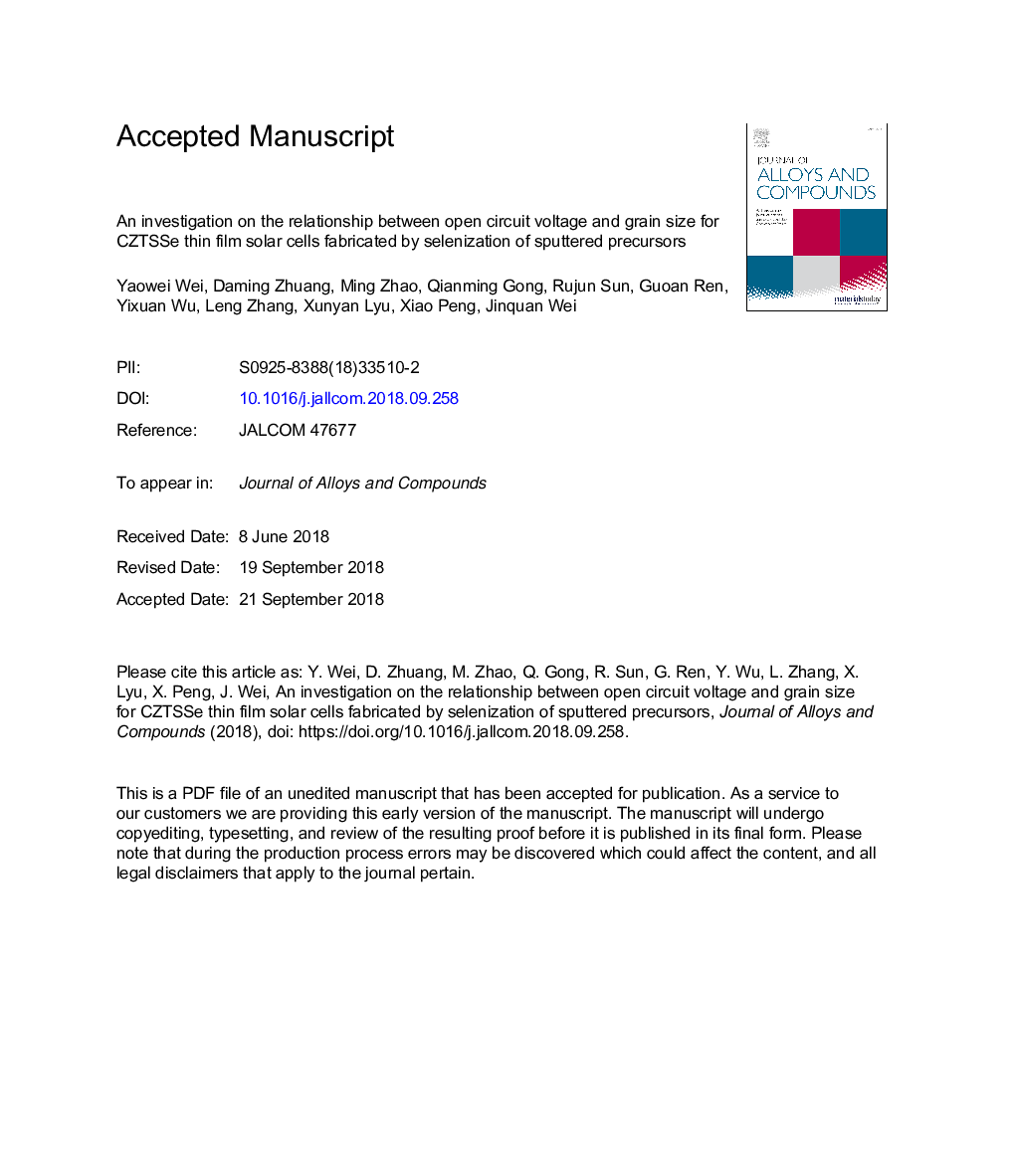| Article ID | Journal | Published Year | Pages | File Type |
|---|---|---|---|---|
| 11020029 | Journal of Alloys and Compounds | 2019 | 22 Pages |
Abstract
The low open circuit voltage (Voc) of Cu2ZnSn(S,Se)4 (CZTSSe) thin film solar cells limits their efficiency. CZTSSe absorbers were fabricated by sputtering Cu2ZnSnS4 (CZTS) target and subsequent selenization treatment and then incorporated into solar cells. The influence of selenization temperature on the growth of the CZTSSe grains and device performance was examined. The absorber films were composed of a CZTSSe phase with high Se/(Se+S) ratios. As the selenization temperature was increased from 460 °C to 500 °C, the grains grew from the top to the bottom of the CZTSSe absorbers, and the average Voc of the CZTSSe solar cells increased from 284â¯mV to 371â¯mV. The band gaps (Eg), derived from external quantum efficiency (EQE) data, were approximately 1.11â¯eV. Activation energies (Ea) was extracted from temperature-dependent current density-voltage (J-V) measurements and used to evaluate the interface recombination level. The Ea increased from 0.82â¯eV to 0.89â¯eV as the selenization temperature was increased, which approached the Eg of CZTSSe. This was likely caused by reduced interface recombination because the grain boundaries decreased as the grains grew larger. An approximately linear relationship between the grain size and Voc was observed. The increase of grain size was achieved by optimizing the selenization temperature, which reduced interface recombination and resulted in an increased Voc. CZTSSe solar cells were fabricated with a maximum efficiency of 8.97%.
Related Topics
Physical Sciences and Engineering
Materials Science
Metals and Alloys
Authors
Yaowei Wei, Daming Zhuang, Ming Zhao, Qianming Gong, Rujun Sun, Guoan Ren, Yixuan Wu, Leng Zhang, Xunyan Lyu, Xiao Peng, Jinquan Wei,
